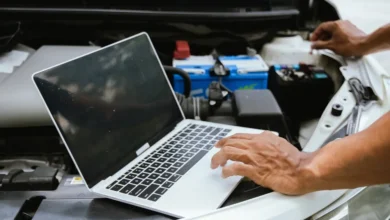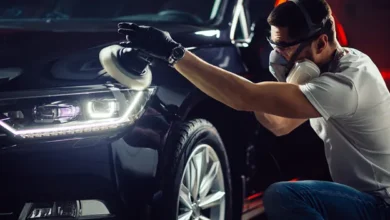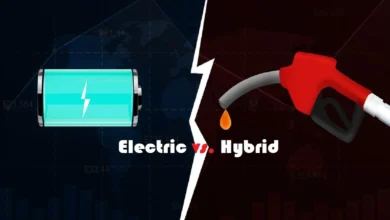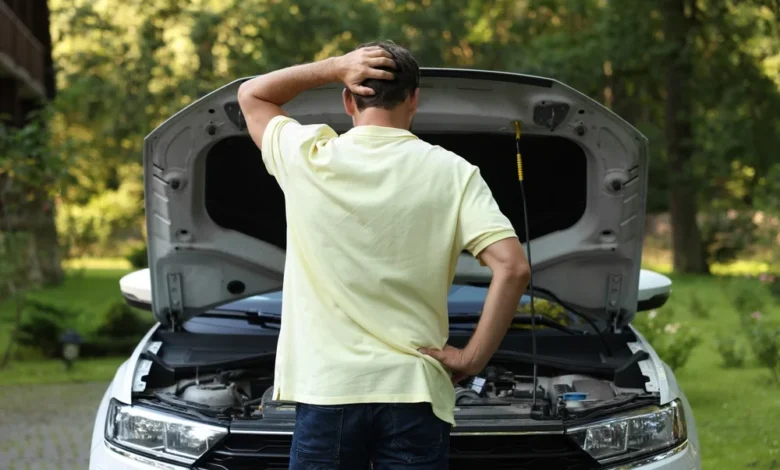
Car troubles can happen to anyone, and they often arise at the most inconvenient times. A strange noise or flickering dashboard light can leave you feeling anxious about what might go wrong next. Ignoring these signs can lead to bigger, more expensive problems down the road, not to mention the stress of being stranded or facing costly repairs.
The good news is that many common car problems can be tackled with a bit of know-how and DIY spirit. From a dead battery to squeaky brakes, understanding how to fix these issues can save you time, money, and stress. In this guide, we’ll explore some of the most frequent car problems and offer practical, quick fixes that you can do yourself.
Engine Issues
Here we shortlisted some common car engine issues:
Overheating
Engine overheating is a serious issue that can lead to significant damage if not resolved. It often stems from low coolant levels, a faulty thermostat, or a broken water pump. Other potential causes include blocked coolant passages, a malfunctioning radiator fan, or a leak in the radiator itself.
- Broken Radiator Fan: If the fan stops working, the engine will overheat, especially in stop-and-go traffic.
- Clogged Coolant Passages: Debris can block the coolant flow, preventing heat dissipation.
🛠️ Quick Fix: After checking the coolant level, inspect for leaks and ensure the radiator fan is working. If a fan or thermostat issue is suspected, it’s best to have it checked by a mechanic.
Engine Sputtering
Engine sputtering is often caused by issues with the fuel system or ignition. The most common causes are dirty fuel injectors, worn spark plugs, or a failing mass airflow sensor.
- Clogged Air Filter: A dirty air filter restricts airflow into the engine, causing sputtering.
- Bad Mass Airflow Sensor: The sensor may send incorrect readings to the engine, leading to poor performance.
🛠️ Quick Fix: Replace the spark plugs if they appear worn and clean or replace the air filter. If the issue persists, inspect the fuel injectors and mass airflow sensor.
Check Engine Light
The check engine light can come on for many reasons, such as a loose gas cap, oxygen sensor failure, or catalytic converter issues.
- Oxygen Sensor Failure: A faulty sensor can cause the engine to run rich, increasing emissions.
- Catalytic Converter Problems: If your vehicle isn’t running properly, it can cause the catalytic converter to fail.
🛠️ Quick Fix: Use an OBD-II scanner to identify the error code and fix the root issue. In some cases, such as a loose gas cap, the fix is simple. More complex issues like a failing oxygen sensor or catalytic converter may require professional help.
Warning Lights
Besides the check engine light, cars have various warning lights, including for oil pressure, temperature, and the battery. Each of these indicates specific problems that require attention.
- Oil Pressure Light: Low oil pressure could mean insufficient lubrication, leading to engine wear.
- Battery Warning Light: This could indicate a problem with the alternator or battery itself.
🛠️ Quick Fix: Check fluid levels for oil pressure issues, and test the battery and alternator for electrical problems.
Fluid Issues
Excessive Oil Consumption
Excessive oil consumption often points to engine problems such as worn piston rings or valve seals. This can lead to a decrease in engine performance and, if left untreated, engine failure.
- Oil Pan Gasket Leak: The oil pan gasket can degrade over time, leading to leaks.
- PCV Valve Issues: A stuck or malfunctioning PCV valve can cause excessive oil consumption.
🛠️ Quick Fix: First, check for external leaks around the oil pan and valve covers. Replacing a malfunctioning PCV valve can often reduce oil consumption. If oil is being burned internally, a mechanic may need to inspect the piston rings and seals.
Leaking Fluids
Leaking fluids can come from several areas of your car, such as the engine, transmission, power steering, or brakes.
- Transmission Fluid Leaks: These are often caused by worn seals or gaskets.
- Brake Fluid Leaks: This can reduce brake performance and pose a safety hazard.
🛠️ Quick Fix: Identify the type of fluid by its color (red for transmission, yellow for brake, green for coolant). Inspect for visible leaks, and if necessary, top up fluid levels and replace damaged gaskets or seals.
Radiator Leaks
Radiator leaks can cause engine overheating, especially if they occur in the hoses or radiator core. Corrosion, cracks, or old hoses are common culprits.
- Corroded Radiator: Over time, coolant can corrode the radiator, leading to leaks.
- Worn Hoses: Cracks in the hoses can cause coolant to leak.
🛠️ Quick Fix: Use a radiator sealant for a temporary fix. For a long-term solution, replace the damaged hoses or radiator to prevent further issues.
Battery and Electrical Problems
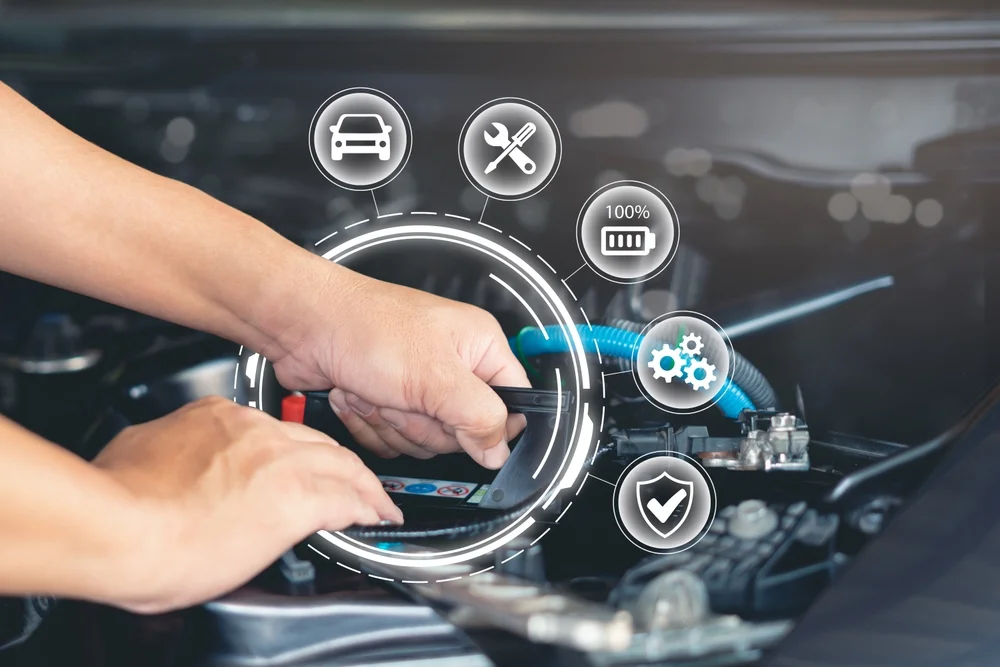
Dead Battery
A dead battery is a common issue, especially if the car has been sitting unused for a long time. Factors include leaving the lights on, a parasitic draw, or an old, worn-out battery.
- Parasitic Draw: Electrical components like lights or radios can continue to drain the battery after the car is off.
- Old Battery: Most batteries have a lifespan of 3–5 years, after which they begin to lose their ability to hold a charge.
🛠️ Quick Fix: If the battery is dead, try jump-starting the car. If the problem recurs, check for a parasitic draw by testing for an electrical drain after turning off the vehicle. If the battery is old, replacing it is the best solution.
Alternator Failure
If your battery keeps dying or your lights dim while driving, the alternator might not be charging the battery properly. Symptoms include dashboard warning lights and difficulty starting the car.
- Loose or Broken Belt: If the belt driving the alternator is worn or loose, it won’t charge the battery properly.
- Faulty Voltage Regulator: The regulator ensures the alternator provides the correct voltage. If it fails, the battery won’t charge correctly.
🛠️ Quick Fix: First, check the condition and tension of the alternator belt. If it’s intact, have the alternator tested, and replace it if necessary.
Electrical Problems
Electrical issues like flickering lights, malfunctioning power windows, or malfunctioning locks can stem from several causes, such as blown fuses, faulty wiring, or a bad ground connection.
- Faulty Ground Connection: A poor ground connection can cause various electrical components to malfunction.
- Blown Fuses: A blown fuse can disable power to key systems like lights or windows.
🛠️ Quick Fix: Check and replace any blown fuses and inspect the wiring for wear or damage. If electrical problems persist, consult an expert.
Tire Troubles
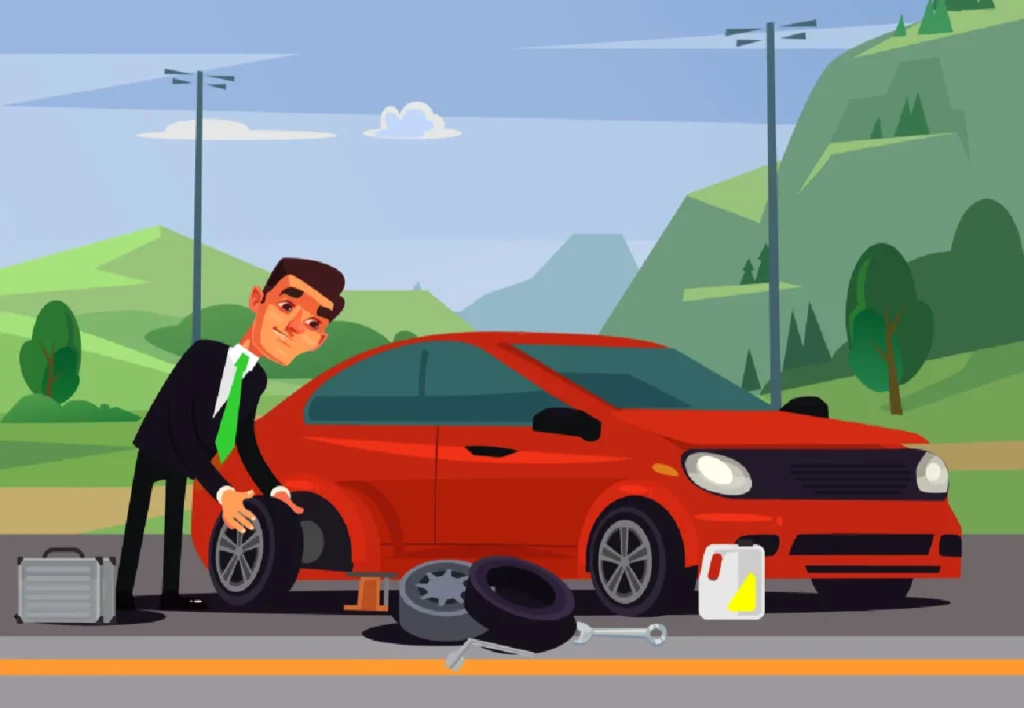
Flat Tires
Flat tires can happen due to punctures, improper inflation, or worn tread. This is one of the most frequent issues drivers face on the road.
- Slow Leaks: Sometimes, a slow leak from a nail or a crack in the tire can cause a gradual loss of air.
- Over- or Under-inflation: Improper tire inflation can cause uneven wear and increase the risk of flats.
🛠️ Quick Fix: Use a tire patch kit for small punctures or carry a spare tire for immediate replacement. Regularly check tire pressure and inflate to the recommended PSI to avoid flats.
The Tires Are Wearing Unevenly
Uneven tire wear often results from poor alignment, worn suspension parts, or unbalanced tires. If left unchecked, uneven wear can lead to reduced fuel efficiency and handling problems.
- Worn Suspension Components: Damaged shocks or struts can cause the tires to wear unevenly.
- Misalignment: If your vehicle pulls to one side, it could be due to improper wheel alignment.
🛠️ Quick Fix: Rotate your tires regularly and check for proper inflation. Have your alignment checked if uneven wear persists and inspect suspension components for wear.
Brake Problems
Worn Brake Pads
Brake pads wear out over time, and if not replaced, they can lead to damage to the rotors, making repairs much more expensive.
- Warped Rotors: Over time, excessive heat from the brakes can warp the rotors, leading to a pulsating brake pedal.
🛠️ Quick Fix: If you hear squeaking or grinding when braking, inspect and replace the brake pads. Check the rotors for warping, and have them resurfaced or replaced if necessary.
Squeaking Brakes
Brakes can squeak due to dust, dirt, or moisture, but squeaking can also be an early indicator of brake pad wear.
- Glazed Brake Pads: Excessive heat from hard braking can cause brake pads to harden or glaze, leading to squeaking.
🛠️ Quick Fix: Clean the brake pads with brake cleaner and inspect for wear. If they are glazed or too thin, replace them.
Brake Fluid Issues
Low or dirty brake fluid can reduce braking efficiency, causing the brake pedal to feel spongy.
- Air in the Brake Lines: Air can enter the brake lines if there’s a leak or during brake fluid changes, which can make the brakes feel soft.
🛠️ Quick Fix: Check the brake fluid level and quality. If it’s dirty, flush and replace it. Bleed the brakes to remove any air from the lines.
Steering and Suspension
Shaking Steering Wheel
A shaking steering wheel can result from unbalanced tires, worn suspension parts, or alignment issues. Driving with this issue can worsen the problem and reduce vehicle safety.
- Tire Imbalance: Tires out of balance cause vibrations at higher speeds.
- Loose Wheel Bearings: If the wheel bearings are worn or loose, the steering wheel may shake.
🛠️ Quick Fix: Start by balancing the tires. If shaking persists, check the wheel bearings and suspension components for wear.
Power Steering Issues
If the steering becomes stiff or noisy, you may have a low-power steering fluid or a malfunctioning power steering pump.
- Power Steering Pump Failure: A failing pump can lead to loss of power steering assist.
- Leaking Power Steering Fluid: Leaks can occur from worn hoses or seals.
🛠️ Quick Fix: Check the power steering fluid level and top it off if it is low. Inspect for leaks and replace hoses if needed.
Air Conditioning Issues

AC Not Blowing Cold Air
An ineffective AC system can stem from low refrigerant levels, a malfunctioning compressor, or clogged condenser coils.
- Clogged Cabin Air Filter: A dirty filter can restrict airflow, making the AC less effective.
- Faulty AC Compressor: If the compressor fails, the AC system won’t work at all.
🛠️ Quick Fix: Start by checking the refrigerant level and replace the cabin air filter. If these steps don’t resolve the issue, inspect the compressor and other components.
Foul Odor from AC
A musty or foul odor can arise from mold or mildew growth in the AC system due to moisture build-up.
- Clogged Drain Tube: A blocked drain tube can prevent moisture from draining, causing it to accumulate.
🛠️ Quick Fix: Use an AC cleaner or deodorizer specifically designed for automotive systems. Regularly check and clear the drain tube to prevent moisture build-up.
Fuel System Issues
Poor Fuel Economy
If your vehicle experiences a drop in fuel efficiency, several factors could be contributing, such as dirty air filters, malfunctioning sensors, or tire pressure issues.
- Dirty Fuel Injectors: Clogged injectors can disrupt the fuel flow to the engine, affecting performance.
- Worn Spark Plugs: Old or dirty spark plugs can lead to incomplete combustion and reduced efficiency.
🛠️ Quick Fix: Replace the air filter regularly, check tire pressure, and consider using a fuel system cleaner to remove deposits from injectors. Replace spark plugs according to the manufacturer’s schedule.
Fuel System Problems
Issues within the fuel system can lead to poor engine performance, reduced power, and difficulty starting the vehicle. Common causes include clogged fuel filters and malfunctioning fuel pumps.
- Clogged Fuel Filter: A dirty filter can restrict fuel flow, leading to stalling or hesitation during acceleration.
🛠️ Quick Fix: Regularly check for leaks in the fuel lines, replace the fuel filter as per your vehicle’s maintenance schedule, and inspect the fuel pump for proper operation.
Other Common Problems
Rust
Rust can be a significant issue, especially in older vehicles or those exposed to harsh weather conditions. It often forms on the undercarriage, wheel wells, and around door frames.
- Rust on Brake Lines: Corrosion can weaken brake lines, posing serious safety risks.
🛠️ Quick Fix: Regularly inspect your car for rust spots and treat them promptly with rust treatment products. Sand down affected areas, apply a rust-inhibiting primer and consider undercoating to prevent future rust.
Window Problems
Electric windows can become stuck or fail to operate altogether. Common causes include faulty window motors, blown fuses, or damaged regulators.
- Regulator Failure: If the regulator is damaged, the window may not move up or down.
🛠️ Quick Fix: Check fuses in the fuse box and listen for any sounds when pressing the window switch. If the window moves slowly or not at all, inspect the motor and regulator for necessary repairs.
The Sensors Are Malfunctioning
Modern vehicles rely heavily on sensors for optimal performance. Malfunctioning sensors can lead to poor engine performance, and reduced fuel efficiency, and can trigger warning lights on the dashboard.
- Tire Pressure Sensors: If these sensors malfunction, it can lead to incorrect pressure readings, impacting handling.
🛠️ Quick Fix: Have the sensors checked and replaced if necessary. Regular maintenance and inspections can help prevent sensor issues.
Conclusion
Regular maintenance and prompt attention to common car problems can keep your vehicle running smoothly and safely. By addressing these issues quickly, you can avoid costly repairs down the line. Always stay vigilant for signs of trouble, and don’t hesitate to consult a professional mechanic when needed. Armed with this knowledge, you’re better equipped to handle the most common car problems and their quick fixes. With a proactive approach to car care, you can ensure your vehicle remains reliable and efficient for years to come.
Remember, knowledge is power when it comes to car repairs, so keep this guide handy for your next DIY project!
We hope you found this article helpful. If you did, check out our blog for more great content like this.

